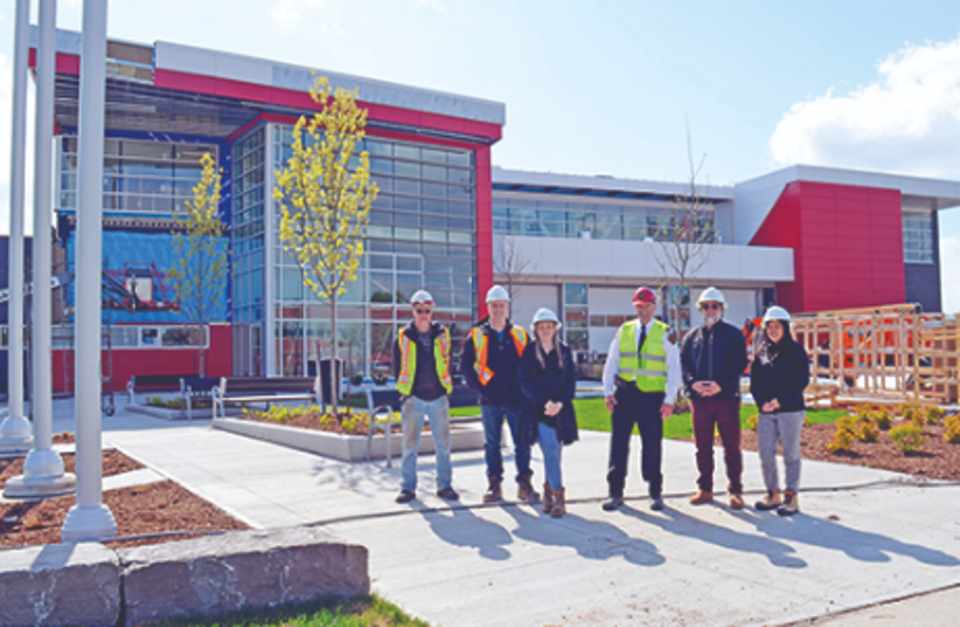Central York Fire Services is expected to bring its headquarters and training centre to Aurora this month as the new fire hall on Earl Stewart Drive nears completion.
The new facility, the cost for which has been shared jointly between the towns of Aurora and Newmarket, is set to welcome its first firefighters “mid-June” after material delays resulted in the timelines being shifted back by more than a month.
Located near the geographic centre of existing CYFS stations, the new facility is designed to improve response times in both communities.
“This is more centrally located in relation to the other stations,” says CYFS Chief Ian Laing. “Our response time from here [Earl Stewart] to any of the four outlying stations is reduced from any existing station now and that is what it is all about: getting as much help as we can in the shortest amount of time that we can to the area that needs it.”
Architect Chris Kubbinga said the location was ideal because it is connected to an arterial road network close to a prominent intersection in Bayview Avenue and St. John’s Sideroad.
The building itself is also designed to be “prominent” as the CYFS’ flagship, he added.
“This is the result of a long process in planning,” said Kubbinga. “These types of buildings are integral to the community but they are also very specialized. What we ended up getting here, and as we’ve had discussions as we’re executing the work, these are effectively a tailored one-off building in the community that is unique in that… it is a fire station, a training facility and also the administrative headquarters of the service. It’s a very important central part of the fire service.”
The open, airy building is essentially designed as two individual buildings flanking the central bay housing the fire trucks. The administrative areas serve as a bridge between the two buildings, resulting in what Kubbinga describes as a “contemporary” design.
“It’s contemporary, state-of-the-art, and we’re looking forward to seeing it in operation and it becoming the central focus of the fire service within Newmarket and Aurora. “There was always clear intention that in order to foster team engagement [it is important] to keep everyone located close to one another so there is quick communication, there is a real-time mentality…and this building is a physical reflection of that, particularly in having training officers now in the senior administrative staff as well. These types of buildings are high performance workplaces for high performance people.”
The building will also result in high performance responses, Chief Laing adds.
“I feel like we have a very good handle with what we’re serving the public. We have council-approved levels of service. Our medical calls have gone up, but we were already doing medical calls [with slight] changes in protocol. This building incorporates interior training space for all the technical rescue things and a huge acreage at the back here for training fire fighters in all the stuff we do, all of the technical rescue things we do. We have the ability to set up props in the back and because we have designed this so we can train in the winter inside, it makes it a much better facility than what we have currently because we can use it more often. That in itself is going to make us more effective.
“Response times in this immediate area are going to be improved tremendously. We’re measured not only in the first trucks arriving within six minutes and 20 seconds; we’re also measured in how quickly we can assemble a fire attack team so we can do fire and rescue and all those things at the same time. The fact that our help could come from here and be at any of the other stations quicker means we can assemble our team quicker, and it makes our people safe and makes the scene safer.”
Brock Weir is a federally funded Local Journalism Initiative reporter at The Auroran



